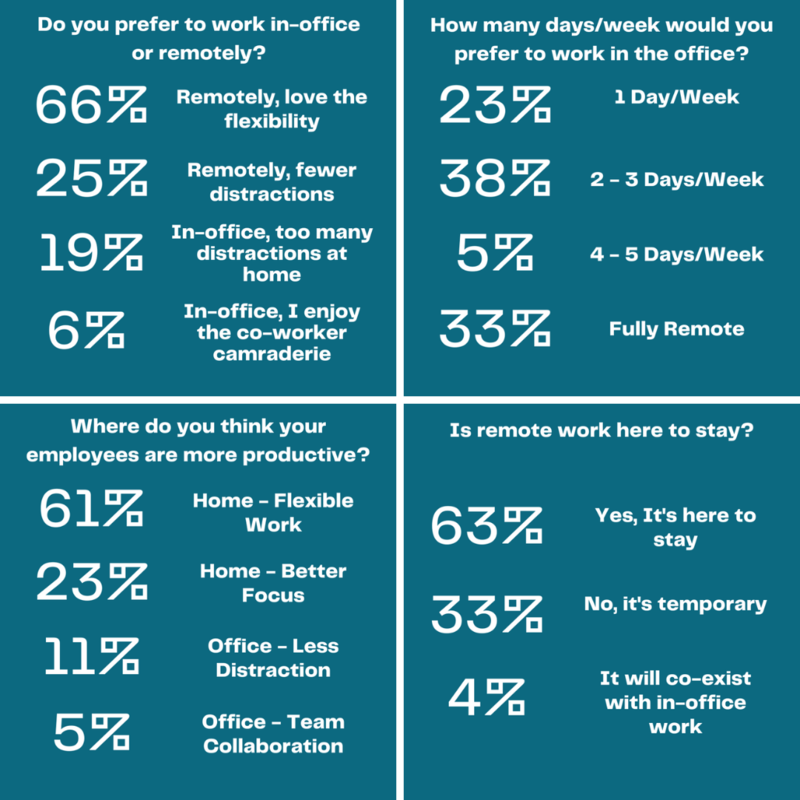In May we explored the Four-Day Work Week and its evolution and adoption. The HR Source continues our Future of Work series by exploring the topic of remote work. This topic has remained a top trending topic since 2020, however, the history of remote work dates back many decades.
The term telecommuting was coined in 1973 by Jack Nilles, a NASA engineer. In the mid 1990’s, companies like American Express, IBM, and AT&T initiated employee telecommuting. In 2000, the DOT Appropriations Act was enacted, which legitimized remote work and mandated companies to create telecommuting policies. The explosion of technology, wireless internet and broadband opened the floodgates. Communication and virtual meeting tools such as Skype, Slack and GoToMeeting provided employees with ways to communicate, “meet” and share presentations. According to software reviewer giant Getapp, the number of people working from home has risen by 400% since 2010.
Fast forward to mid-year 2023. Josh Bersin, co-founder and CEO of The Josh Bersin Company reports that more than 66% of survey participants have said they will not work for a company that mandates full-time work in the office because they need and like flexibility. More than 4,100 full-time employees working in the U.S, Canada, Ireland and the United Kingdom were polled for the Workhuman iQ’s Evolution of Work report . Overall, the four countries combined saw a 4 percentage point drop in full time remote workers to 11%. Organizations globally are struggling with how to effectively balance employees demands for remote work, hybrid work schedules, and four-day work weeks with the desire to return to pre-pandemic work environments. Return to work mandates contributed in part to the decline in full time remote workers as reported by Workhuman iQ. In addition, workers reported that their employers reverted back to pre-COVID arrangements in 2022 in sectors that traditionally didn’t include remote work such as manufacturing and education.
The HR Source conducted an informal opinion poll of our followers regarding remote work. As expected, the majority of respondents preferred working remotely and believe that this work arrangement is here to stay.

When considering remote work as part of a hybrid arrangement, slightly more respondents expressed a preference to 2-3 days/week compared to working fully remote. This result is in line with current observations that hybrid schedules may begin to morph into 4-day work weeks as a compromise between hybrid flexibility and full in-person work.
The Walt Disney Company recently rolled out a four-day in-office hybrid schedule, according to CNBC; more than 2,300 corporate employees have signed a petition urging leadership to reconsider. Elon Musk has been very vocal regarding his disdain for work-from-home policies and firm stance on in-person working which led to the departure of numerous employees. In contrast, top execs at HubSpot fully support a remote-first policy. These examples highlight the variation across companies and the importance of employers using best practices when instituting work policies. One such practice would be to clearly communicate what both the company and employees gain, focusing on greater productivity and performance which could lead to bonuses and other employee benefits. Most importantly, senior leadership must model the policies to avoid failure of buy-in.
For certain, the definition of a work week has forever changed. Technological advances, worker mindset changes as well as lasting impacts from the global pandemic have all contributed to this evolution. As employers seek to firmly establish their new norm, flexibility and work-life balance will remain at the forefront of the discussion.




